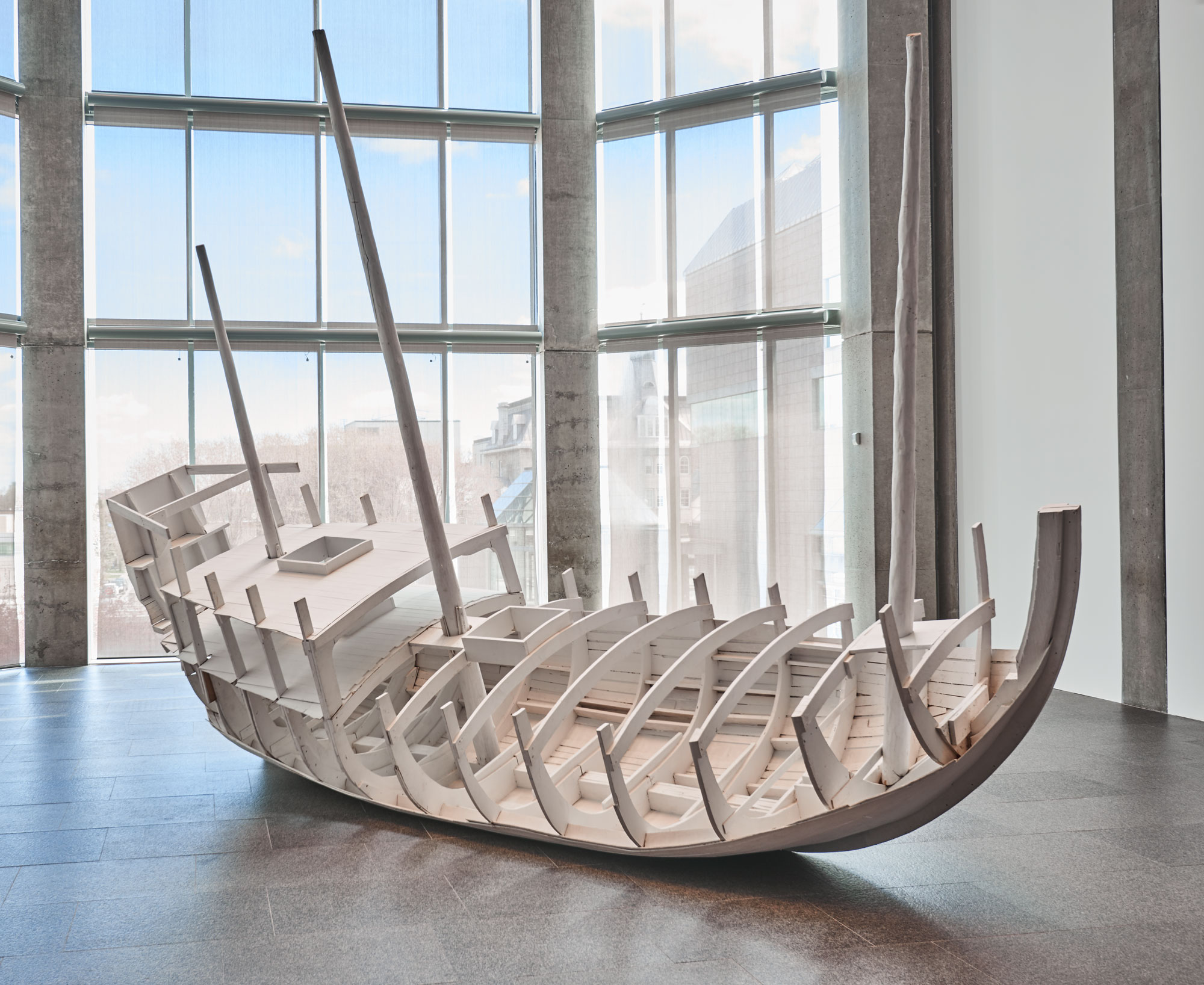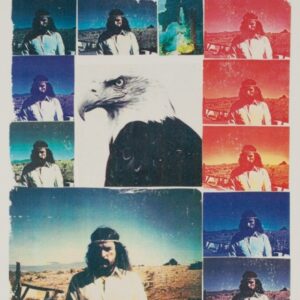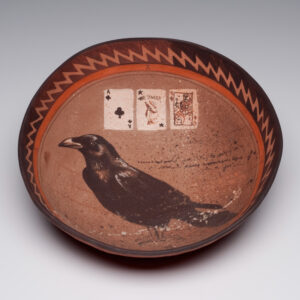Voyage 1 1988

Carl Beam, Voyage 1, 1988
Painted wood, 530 x 308 x 310 cm
National Gallery of Canada, Ottawa
© Estate of Carl and Ann Beam / CARCC Ottawa 2024
One of only two surviving major sculptures Carl Beam ever made, Voyage 1 is a quarter-scale replica of Christopher Columbus’s ship the Santa Mariá, the largest of his trio of vessels, which also included the Niña and the Pinta. After Columbus’s voyage to Turtle Island (North America) in 1492, the Santa Mariá and its crew of forty were abandoned in the New World after the ship ran aground, while Columbus sailed back to Spain to tell Queen Isabella what he had “discovered.” The image of the wrecked Santa Mariá inspired Beam to create this piece.
-
Transport of The Columbus Boat, n.d.
Photograph by Ann Beam
© Estate of Carl and Ann Beam / CARCC Ottawa 2024
-
Transport of The Columbus Boat, n.d.
Photograph by Ann Beam
© Estate of Carl and Ann Beam / CARCC Ottawa 2024
-
Installation of The Columbus Boat, n.d.
Photograph by Ann Beam
© Estate of Carl and Ann Beam / CARCC Ottawa 2024
Voyage 1 is one element of The Columbus Project, 1988–92, a multi-work critique of the so-called discovery of North America by Columbus. It comprises photo-emulsion and oil-on-canvas paintings, video documents of performance pieces, installations, architectural blueprints, and numerous studies in varying formats and media. In the late 1980s and early 1990s, around the quincentennial of Columbus’s voyage, Beam took aim at the celebratory nature of the anniversary by choosing to highlight the tragic impact of European colonialism, its racist legacy, and its direct link to slavery on Turtle Island. The Columbus Project also led to other artistic investigations into the dynamics and disasters of colonization heralded by Columbus’s arrival in the Americas.
In 1988, when Beam was living in Peterborough, Ontario, he made his main studio in the family home. Recognizing that he had neither formal training as a sculptor nor specialist skills in boat-building, he commissioned his next-door neighbour John Graff—a master shipbuilder from Nova Scotia—to help him construct the skeletal husk of the Santa Mariá in his woodshop. A year after Voyage 1 was completed, Beam said: “The idea of constructing a boat like Columbus’s ships… is not any homage to seamanship or carpentry, but more like trying to see if the idea of sailing, or aspiring to something else in a voyage, can be conveyed—the idea of taking a trip into an unspecified area.”
Voyage 1 is a document of a historical fact: a boat run aground and on the verge of sinking. But by highlighting the boat’s ribs, Beam also drew attention to the object’s resemblance to the whitened bones of a beached whale, a metaphor he would later explore in his series The Whale of Our Being, 2001–03. These multiple meanings lend the piece an elegiac reading. It signifies different kinds of tragedy: the end of a storied boat, the abject failure of a voyage of “discovery” that heralded the genocide of millions of Indigenous peoples, and the expression of the limits of knowing based on measurement and rationalism. By pointing to the failure of Western European knowledge systems, Beam sought to draw attention to the enduring qualities of Indigenous knowledge and belief systems that predate European contact and continue to be relevant today.

 About the Author
About the Author
 More Online Art Books
More Online Art Books
 Acknowledgements
Acknowledgements